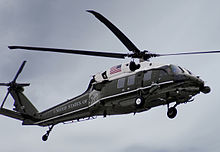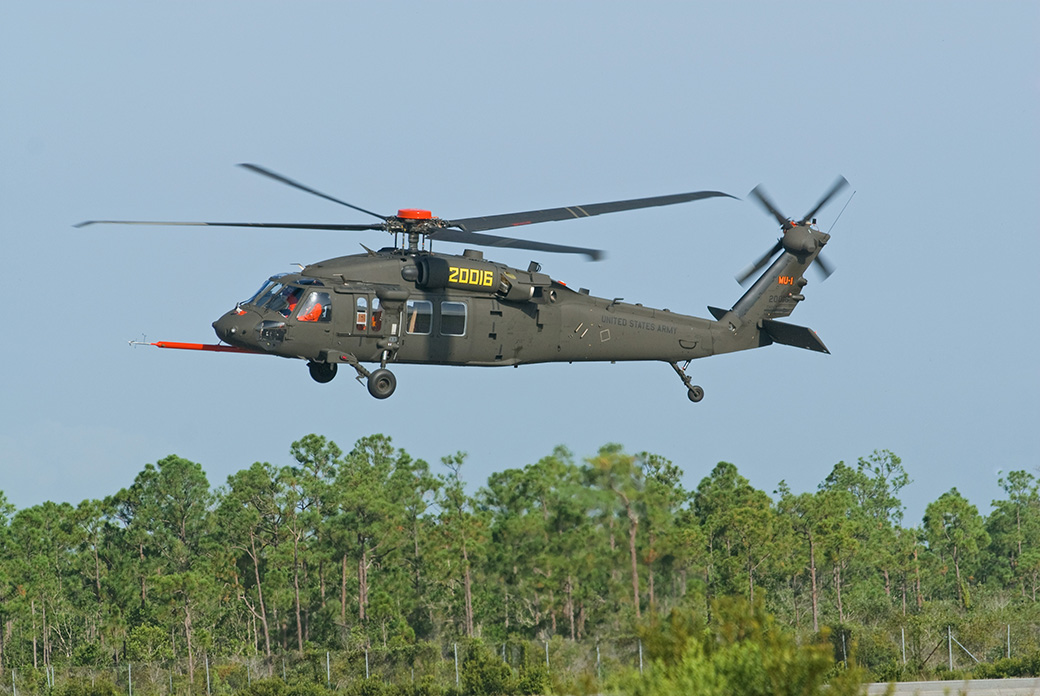A Look at the Sikorsky S 70's Function in Army and Civil Aviation
High-Performance Multi-Role Rotorcraft Featuring Advanced Cabin Technologies and Integrated Sensing Unit Equipments
The world of rotorcraft innovation has seen significant advancements in current times, particularly in the world of high-performance multi-role rotorcraft outfitted with cutting-edge cabin technologies and seamlessly integrated sensor systems. In the adhering to discussion, we will certainly explore the development of rotorcraft innovation, delve into the world of innovative cabin developments, and take a look at the effects of integrated sensor systems on the functional flexibility and efficiency of contemporary rotorcraft.
Development of Rotorcraft Innovation
The advancement of rotorcraft innovation has actually been marked by significant developments in the rules of aerodynamics, products, and propulsion systems, shaping the capabilities and performance of contemporary rotorcraft. Wind resistant renovations have actually improved the effectiveness and ability to move of rotorcraft, allowing for enhanced rate, dexterity, and security during flight (sikorsky s 70). Technologies in materials, such as using composite products and advanced alloys, have caused lighter yet more powerful rotorcraft structures, improving general performance and longevity. Furthermore, advancements in propulsion systems, including a lot more effective engines and cutting-edge propulsion innovations, have actually enabled rotorcraft to achieve greater altitudes, faster speeds, and greater payloads.
These advancements have not only transformed the capacities of rotorcraft however have actually also increased their applications throughout numerous industries, consisting of army, commercial, and emergency services. The continuous advancement of rotorcraft innovation remains to drive development in the area, pressing the boundaries of what is possible and shaping the future of upright trip.
Advanced Cockpit Innovations
Structure upon the fundamental improvements in aerodynamics, products, and propulsion systems, the world of rotorcraft technology currently changes focus towards introducing Advanced Cockpit Innovations. The assimilation of innovative technologies within the cabin environment plays a crucial duty in boosting the functional capabilities, security, and effectiveness of contemporary rotorcraft. sikorsky s 70. Advanced Cockpit Innovations encompass a wide selection of functions designed to supply pilots with improved situational understanding, structured data administration, and instinctive control user interfaces
One of the key developments in cabin style is the application of glass cabins, which change conventional analog evaluates with high-resolution display screens. These electronic systems provide adjustable layouts, real-time data combination, and improved readability, making it possible for pilots to accessibility important information at a look. Furthermore, advanced avionics systems, such as fly-by-wire controls and enhanced reality displays, are transforming exactly how pilots connect with the airplane, permitting specific control and boosted decision-making abilities.


Including sophisticated cockpit technologies not only improves pilot efficiency however also adds to overall mission efficiency and safety in complex functional atmospheres. By leveraging cutting edge technologies within the cockpit, rotorcraft makers are establishing new criteria for operational excellence and mission success.
Integrated Sensor Systems
With the evolution of rotorcraft modern technology, the assimilation of sophisticated Integrated Sensing unit Systems has actually come to be paramount in boosting operational effectiveness and security. These Integrated Sensing unit Solutions encompass a vast range of technologies that offer essential data for different functions such as navigation, monitoring, targeting, and environmental monitoring. By perfectly integrating sensing units like radars, cameras, find out here now lidar, and infrared systems right into rotorcraft, operators can gain from boosted situational recognition, improved objective capabilities, and decreased pilot workload.
One trick advantage of Integrated Sensor Solutions is their capability to gather real-time data and offer actionable understandings to pilots and objective operators. As an example, progressed radar systems can identify and track targets over long ranges, enabling for early danger detection and reliable response planning. Additionally, integrating electro-optical and infrared cams enables rotorcraft to carry out reconnaissance and surveillance objectives with accuracy and accuracy.
In significance, the assimilation of sophisticated sensor modern technologies into rotorcraft not only enhances functional efficiency but additionally contributes dramatically to overall goal success and team safety. As rotorcraft remain to progress, the duty of Integrated Sensor Systems will most certainly stay at the leading edge of development in the aerospace market.
Functional Flexibility and Efficiency
Enhancing operational versatility and effectiveness in rotorcraft is an all-natural development from the combination of advanced Integrated Sensor Solutions. By leveraging the understandings and information provided by these sophisticated sensing unit systems, rotorcraft can enhance their performance throughout different objectives and atmospheres.
Functional flexibility encompasses the ability of rotorcraft to adjust to different duties and circumstances effectively. With advanced cockpit technologies and integrated sensor systems, rotorcraft can seamlessly change in between tasks such as search and rescue, clinical evacuation, security, and extra. This flexibility boosts the rotorcraft's ability to meet varied operational requirements without calling for extensive reconfiguration.
Performance in rotorcraft operations is crucial for maximizing goal effectiveness and resource usage. Integrated sensor systems play an essential duty in improving functional efficiency by offering real-time information on climate condition, terrain mapping, target tracking, and extra. This information enables pilots to make informed decisions quickly, optimize flight paths, conserve gas, and enhance total goal efficiency.
Effect On Modern Aviation Procedures

In addition, the combination of sophisticated sensing units facilitates boosted mission planning and execution, making it possible for rotorcraft to execute a wide range of tasks with improved precision. From search and rescue operations to aerial firefighting and police goals, the capacities of modern rotorcraft outfitted with innovative cockpit modern technologies and incorporated sensing unit systems are unparalleled.
Furthermore, the effect of these developments prolongs past operational performance to cost-effectiveness and sustainability. By enhancing flight paths, fuel consumption, and upkeep timetables, high-performance rotorcraft outfitted with sophisticated cabin innovations and sensing units contribute to reducing functional expenses and ecological influence, making them vital assets in contemporary air travel operations.
Verdict
Finally, the high-performance multi-role rotorcraft with sophisticated cabin modern technologies and integrated sensor systems represents a significant evolution in air travel technology. These developments boost functional convenience and performance, eventually influencing modern-day aviation operations in a positive method. The integration of these innovative technologies allows for enhanced capacities and efficiency in numerous objective situations, showcasing the proceeded innovation of rotorcraft technology in the aviation market.
The world of rotorcraft technology has actually seen notable innovations in recent times, particularly in the world of high-performance multi-role rotorcraft outfitted with innovative cabin technologies and flawlessly incorporated sensing unit systems. From boosted goal versatility to boosted operational efficiency, the convergence of sophisticated cockpit technologies and integrated sensor systems has ushered in a new period of possibilities for rotorcraft helpful hints applications. In the adhering to conversation, we will explore the development of rotorcraft innovation, delve into the realm of innovative cabin innovations, and examine the implications of incorporated sensor systems on the functional convenience and performance of modern rotorcraft.
